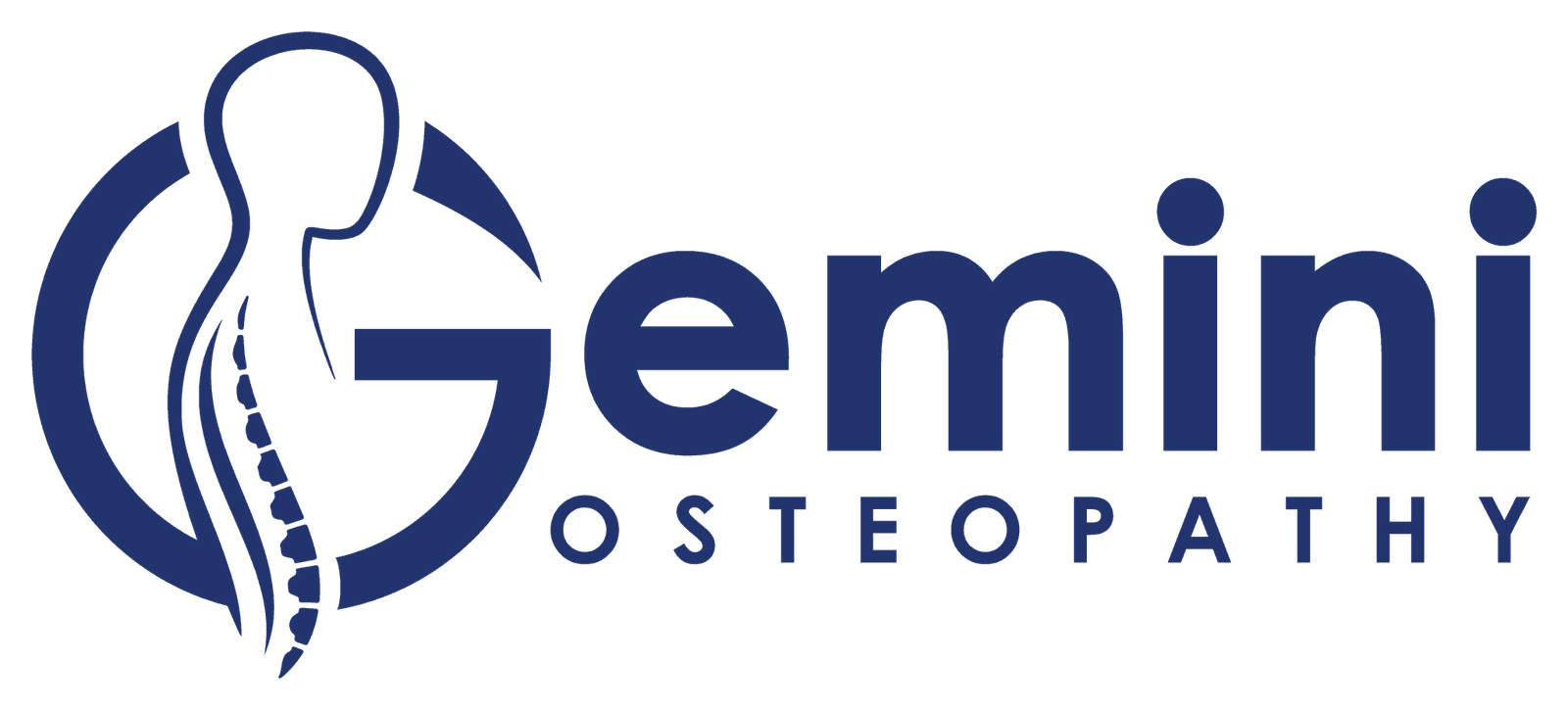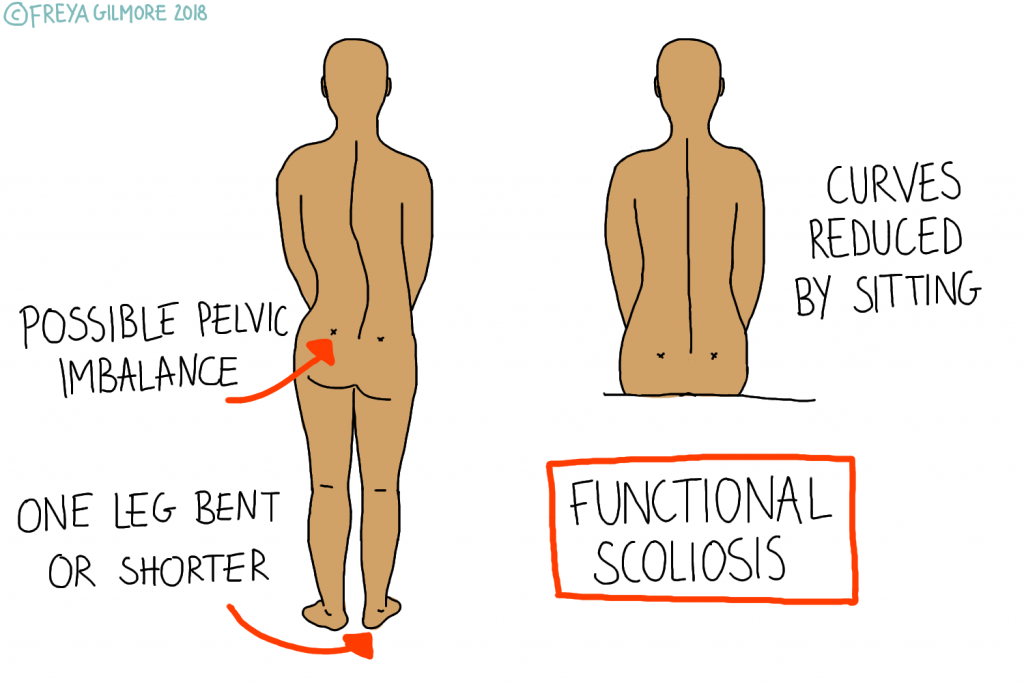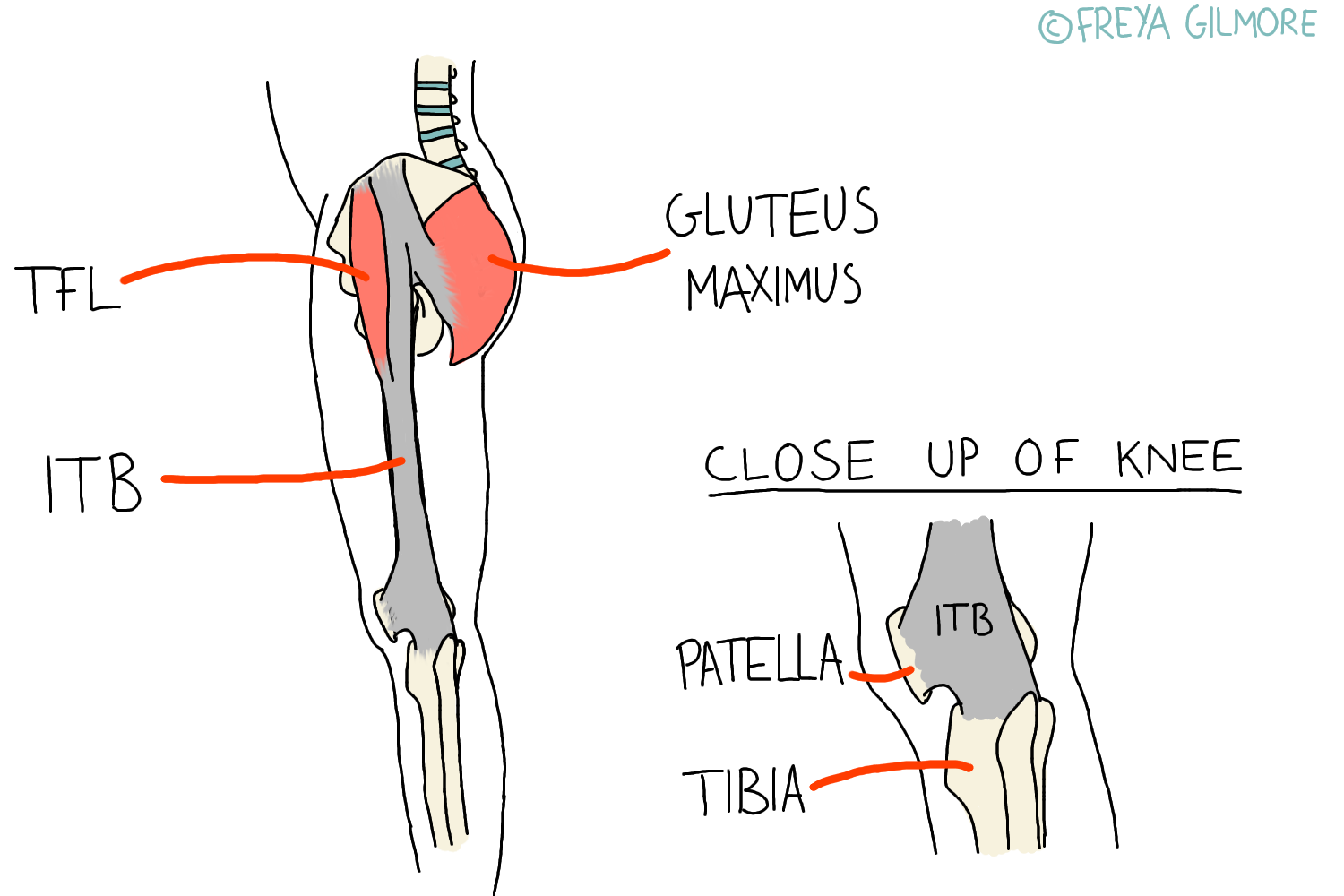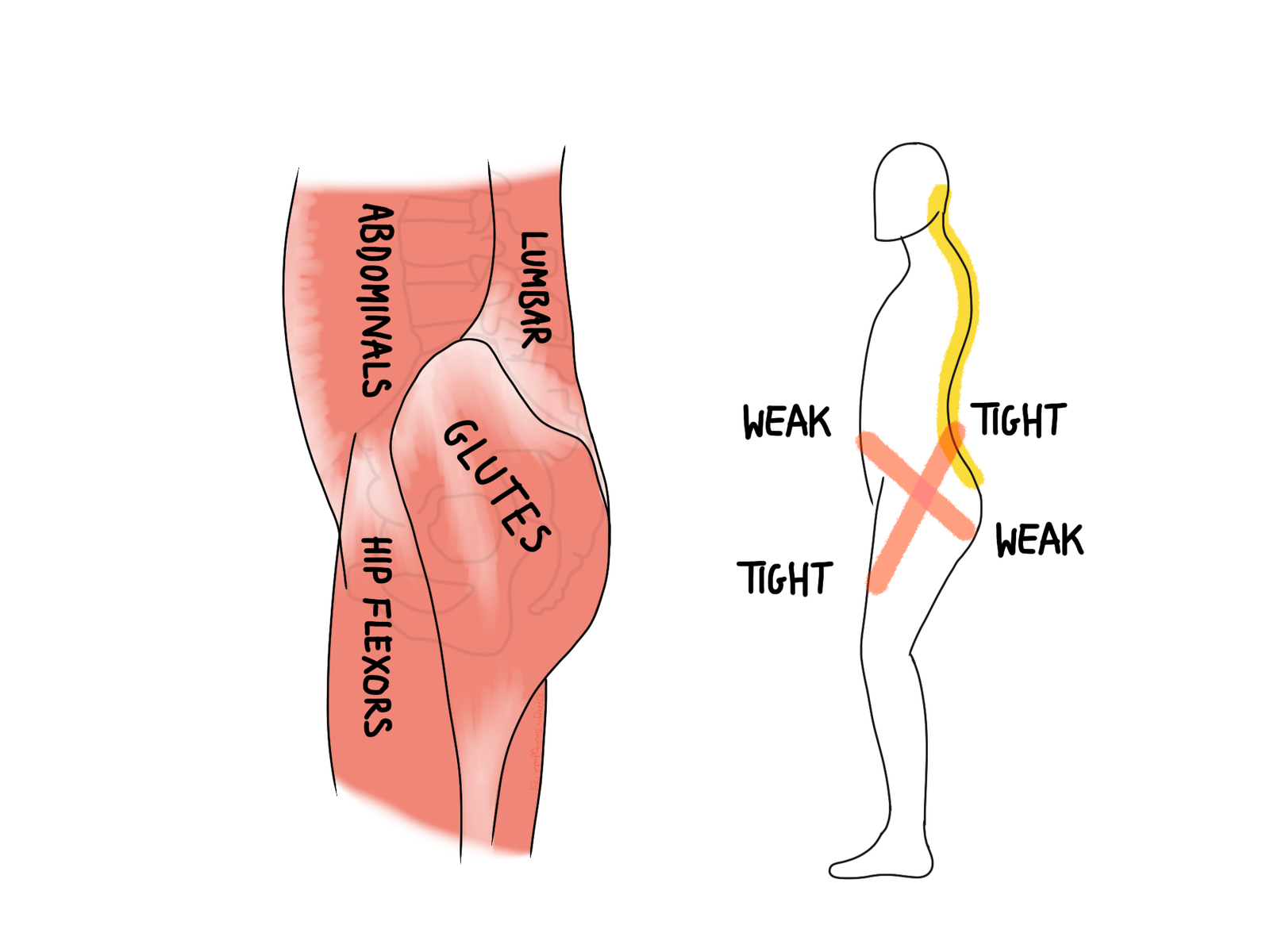The IT band is a band of tissue that runs down the side of the…
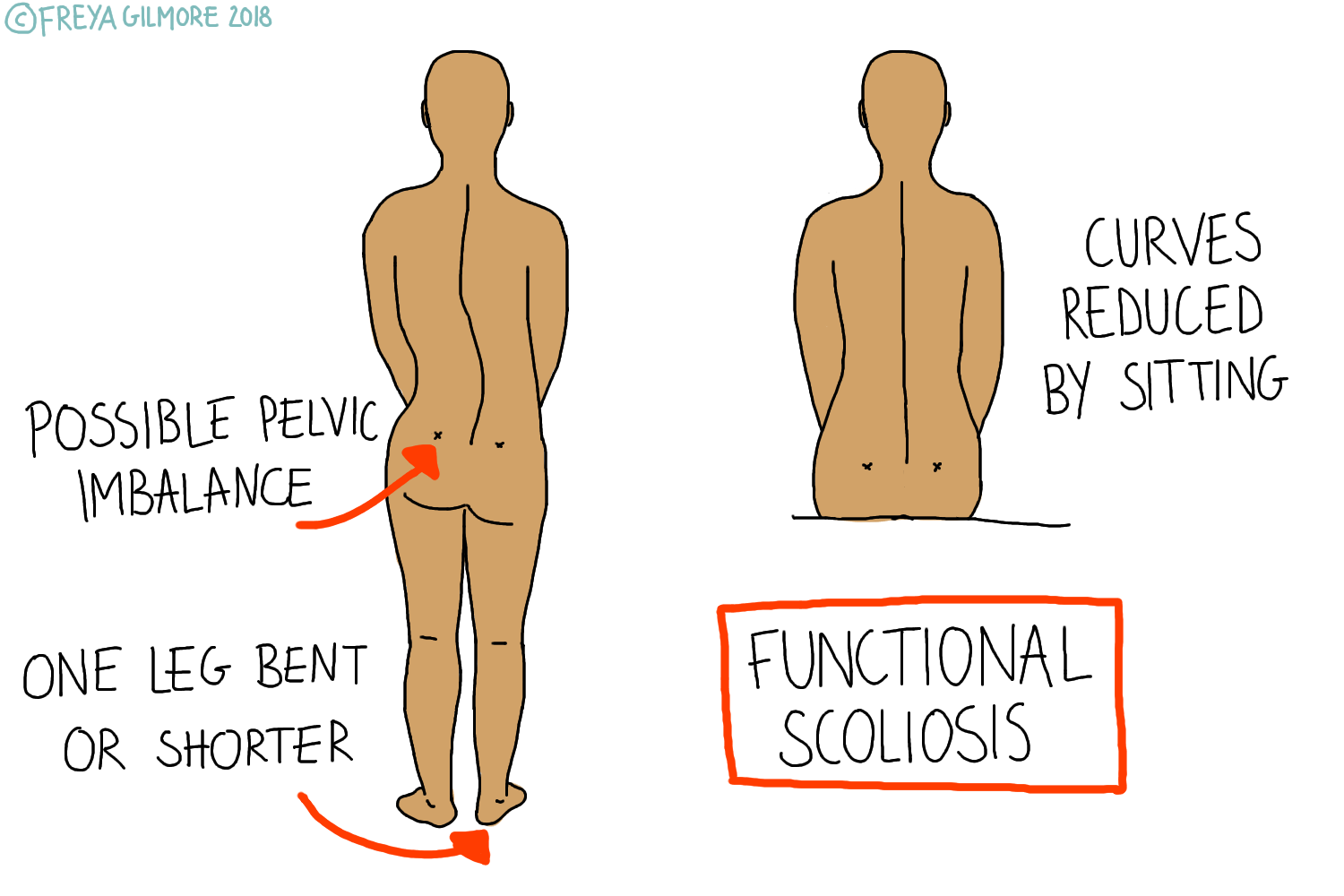
Scoliosis
A scoliosis is one or more lateral curves in the spine. This means that the spine doesn’t look straight when viewed from behind. We are all a bit wonky and depending how you’re sitting right now, there probably will be some sort of curve.
Because this is more of a finding than a diagnosis, having a scoliosis doesn’t necessary mean anything in isolation.
The Two Types of Scoliosis
If there is a scoliosis present every time someone stands, but not while sitting, it is called a functional scoliosis. Diagnosing this as a scoliosis is a bit controversial, especially if there are no associated symptoms. An imbalance somewhere below the pelvis cause functional scolioses, such as one leg being longer than the other. Most people have a slight difference in leg length, and as long as they can function well around it, it’s not a problem.
A scoliosis that doesn’t improve in any position is a structural scoliosis. This is more likely to be acted on, especially in children. If the angle is deemed significant enough, a child with scoliosis may be referred for monitoring, a brace, or surgery by their doctor. The NHS currently offers very young children a cast instead. 80% of the time there’s no telling why it has developed, which makes it idiopathic. The curve may be dictated by unusually shaped bones in the spine. Osteopaths can’t change the shape of bone, but may be able to offer some relief to affected muscles and joints around the area.
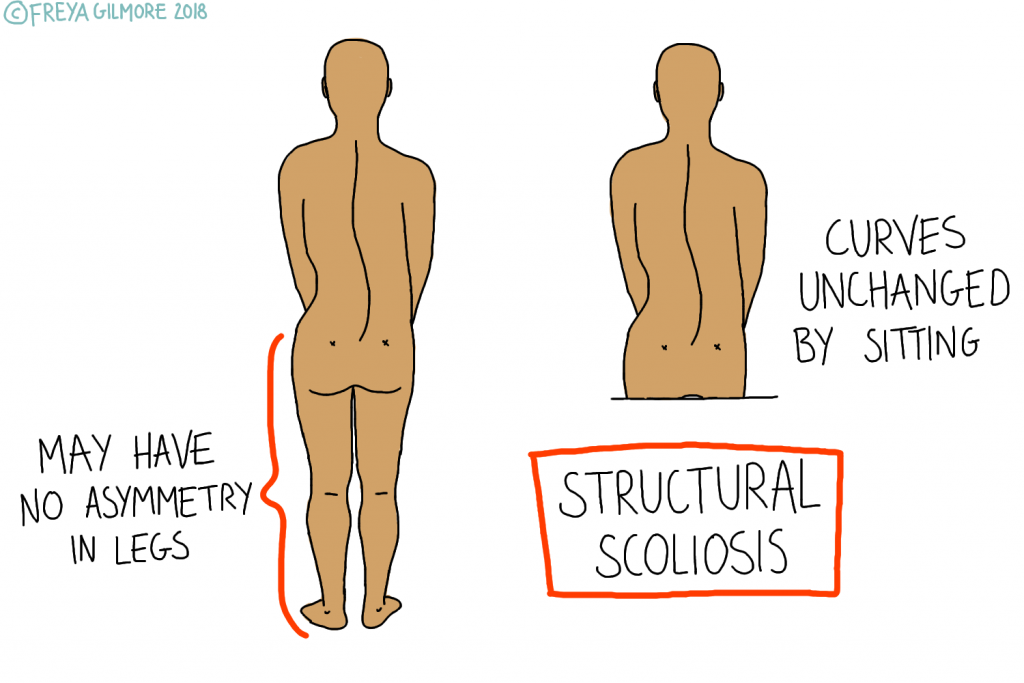
Management
For mild scolioses in adults or adolescents, osteopathy can help with function. The muscles on the concave side of the spine tighten, limiting your ability to straighten up or twist. This can cause local discomfort and compensatory issues elsewhere. Back pain is not unusual for people with significant lateral curves of the spine.
However, if you have an asymptomatic scoliosis, it may be functioning well enough to not need treatment at all. If a mild curve develops during childhood or adolescence, the growing body can be good at adapting to it. You are welcome to book an appointment for a check-up or to catch early compensation patterns.
Working directly on those tight muscles and counteracting the curve is one way your osteopath might be able to help. We can also provide exercises to help strengthen weaker muscles. You might find exercise particularly useful if it’s an asymmetric activity that encourages the curve. Many musical instruments require a wonky position, as do some sports. We can also help with identifying and managing factors that may be maintaining a mild scoliosis. If you always have a wallet in your back pocket, for example, this will encourage a curve when you sit down.
You can make an appointment online for a spinal assessment.
